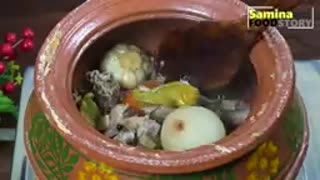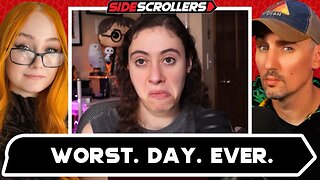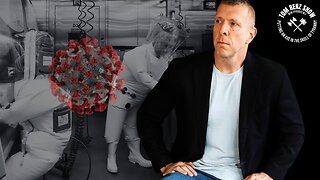Premium Only Content

Electric Motor Basics_2
### **Electric Motor Basics: Understanding the Fundamentals**
Electric motors are essential devices that convert electrical energy into mechanical energy, powering everything from household appliances to industrial machinery. Whether it’s a fan, pump, conveyor belt, or an electric car, electric motors play a crucial role in modern life. Here’s an overview of electric motor basics, including types, working principles, and key components.
---
### **1. Types of Electric Motors**
Electric motors can be classified based on their power source, design, and operational mechanisms. The main categories are:
#### **A. DC Motors (Direct Current Motors)**
- **Principle:** DC motors run on direct current (DC) electricity, where the flow of electric charge is unidirectional.
- **Key Features:**
- **Speed Control:** DC motors allow easy speed control by adjusting the input voltage or using a controller.
- **Applications:** Found in toys, electric vehicles, small appliances, and adjustable-speed tools.
- **Subtypes:**
- **Brushed DC Motors:** These use brushes to transfer current to the rotor, allowing for simpler design but requiring maintenance due to wear and tear.
- **Brushless DC Motors (BLDC):** More efficient, with no brushes, leading to less maintenance and longer lifespan. Common in computers, robotics, and high-performance devices.
#### **B. AC Motors (Alternating Current Motors)**
- **Principle:** AC motors operate on alternating current, where the direction of the electric charge reverses periodically.
- **Key Features:**
- **Variety of Designs:** AC motors come in different configurations depending on the application, with two main types: synchronous and induction motors.
- **Applications:** Used in industrial machinery, home appliances, and HVAC systems.
- **Subtypes:**
- **Induction Motors:** The most common type of AC motor. In an induction motor, the electric current is induced in the rotor by the magnetic field created by the stator.
- **Synchronous Motors:** These motors operate at a constant speed synchronized with the AC supply frequency, used for precise speed control in applications like clocks, robotics, and high-precision machines.
#### **C. Universal Motors**
- **Principle:** Universal motors can run on both AC and DC power, making them versatile and suitable for various applications.
- **Key Features:**
- **High Speed:** These motors are known for high-speed operation and are commonly found in portable power tools and vacuum cleaners.
- **Applications:** Used in household appliances, power tools, and small electric devices.
---
### **2. Basic Components of an Electric Motor**
Electric motors generally consist of several key components that work together to generate motion.
#### **A. Stator**
- **Function:** The stationary part of the motor that generates a rotating magnetic field. In AC motors, the stator contains the windings that are energized by the electric current, creating a magnetic field.
- **Types:** In DC motors, the stator can be a permanent magnet or an electromagnet, while in AC motors, it typically has copper windings.
#### **B. Rotor**
- **Function:** The rotating part of the motor that is subjected to the magnetic field generated by the stator. The rotor is attached to a shaft and turns when it interacts with the magnetic field, converting electrical energy into mechanical motion.
- **Types:** The rotor can be either a squirrel-cage type (used in induction motors) or wound (used in synchronous motors).
#### **C. Commutator (in DC motors)**
- **Function:** A rotating switch that reverses the direction of current flow in the rotor windings, ensuring that the rotor continues to rotate in the same direction. It is typically found in brushed DC motors.
#### **D. Brushes (in DC motors)**
- **Function:** The brushes are in contact with the commutator and help transmit electrical current from the external power supply to the rotor windings.
- **Maintenance:** Brushed motors require regular maintenance to replace worn-out brushes, as friction causes wear over time.
#### **E. Shaft**
- **Function:** The central part of the motor that rotates as the rotor turns. The mechanical output, such as turning a fan blade or conveyor belt, is typically attached to the shaft.
#### **F. Bearings**
- **Function:** Bearings support the rotor shaft and allow smooth rotation with minimal friction. They help in reducing wear and tear, ensuring efficient motor operation.
---
### **3. How Electric Motors Work**
The basic operation of an electric motor relies on the interaction between magnetic fields and electric currents.
#### **A. Magnetic Fields and Current**
- When a current flows through a conductor (such as a wire), it creates a magnetic field around the conductor.
- In a motor, this magnetic field interacts with the field of the stator, which is powered by an external electricity source.
#### **B. Lorentz Force**
- The interaction of the magnetic field with the current in the rotor creates a force, known as the Lorentz force, which pushes the rotor to rotate. The direction of this force is determined by the direction of the current and the magnetic field.
#### **C. Rotor Movement**
- As the rotor turns, it creates a mechanical output (e.g., rotation of a fan or a conveyor belt). In DC motors, the commutator ensures the current direction in the rotor is reversed to maintain continuous rotation.
#### **D. Electromagnetic Induction (in AC motors)**
- In an induction motor, when the stator generates a rotating magnetic field, it induces a current in the rotor. This current interacts with the stator’s magnetic field, causing the rotor to rotate.
---
### **4. Key Motor Ratings and Specifications**
When choosing an electric motor for a specific application, several key ratings and specifications need to be considered:
#### **A. Voltage**
- **Definition:** The electrical potential difference that drives current through the motor. Motors are typically designed to run on specific voltage levels (e.g., 120V, 240V, or 480V).
#### **B. Current**
- **Definition:** The amount of electrical charge passing through the motor. It is important to ensure the motor is powered by a current that matches its rated specification.
#### **C. Power**
- **Definition:** The rate at which the motor converts electrical energy into mechanical energy, typically measured in horsepower (HP) or kilowatts (kW).
#### **D. Speed**
- **Definition:** The rotational speed of the motor, usually measured in revolutions per minute (RPM). This can be a fixed or variable speed depending on the motor type.
#### **E. Torque**
- **Definition:** The rotational force generated by the motor. Higher torque is needed for applications requiring more power to move or lift heavy objects.
---
### **5. Efficiency and Energy Consumption**
Electric motors come in various efficiency classes, which indicate how much of the electrical energy is converted into useful mechanical power.
#### **A. Motor Efficiency**
- **Definition:** Motor efficiency is the ratio of useful mechanical power output to the electrical power input. Higher efficiency motors consume less electricity for the same output, which is especially important in energy-intensive industrial applications.
#### **B. Energy Saving Technologies**
- **VFD (Variable Frequency Drive):** VFDs are used to control the speed and torque of AC motors by adjusting the frequency of the power supplied to the motor. They can greatly improve energy efficiency in applications where motor speeds vary.
- **Energy-Efficient Motors:** Modern energy-efficient motors, such as Premium Efficiency and Super Premium Efficiency motors, are designed to minimize energy consumption, reduce operational costs, and meet environmental regulations.
---
### **6. Applications of Electric Motors**
Electric motors are used in a wide range of applications across various industries, including:
- **Home Appliances:** Fans, washing machines, refrigerators, and air conditioners.
- **Automotive Industry:** Electric vehicles (EVs), power windows, windshield wipers, and air conditioning.
- **Industrial Machinery:** Conveyors, pumps, compressors, cranes, and manufacturing equipment.
- **HVAC Systems:** Heating, ventilation, and air conditioning systems.
- **Power Tools:** Drills, saws, grinders, and other hand-held tools.
---
### **7. Common Motor Problems and Troubleshooting**
#### **A. Motor Not Starting**
- **Possible Causes:** Power supply issues, blown fuses, or faulty wiring.
- **Troubleshooting:** Check the power source, inspect wiring, and test for continuity.
#### **B. Overheating**
- **Possible Causes:** Overloading, insufficient ventilation, or defective bearings.
- **Troubleshooting:** Check load conditions, ensure proper cooling, and inspect bearings for wear.
#### **C. Motor Stalling**
- **Possible Causes:** Mechanical obstruction, voltage drop, or excessive load.
- **Troubleshooting:** Inspect for obstructions, verify power supply, and check the load for excessive resistance.
---
### **Conclusion**
Electric motors are essential components in many applications across industries. By understanding the basics of electric motor types, components, and working principles, it’s possible to select the right motor for each application and troubleshoot common issues. With energy efficiency becoming increasingly important, modern motor technologies continue to improve to meet environmental and operational demands.
-
 7:58
7:58
HSESafetyInformation
2 months agoAuthentic Peshawari Rosh _ Namkeen Gosht Recipe __ Traditional KPK and Baluchistan
581 -
 LIVE
LIVE
Side Scrollers Podcast
2 hours agoBlabs’ Day is RUINED | Side Scrollers
300 watching -
 LIVE
LIVE
The Big Mig™
1 hour agoGlobal Finance Forum From Bullion To Borders We Cover It All
4,487 watching -
 LIVE
LIVE
The Tom Renz Show
37 minutes agoBREAKING: White House Acknowledges COVID Is From a Lab!
169 watching -
 LIVE
LIVE
Flyover Conservatives
12 hours agoAmerica’s Turning Point: Is a New Wave of Heroes Rising? - Phil Williams; 5 Tips to Get Unstuck and Explode Your Business - Clay Clark | FOC Show
494 watching -
 2:10:00
2:10:00
Badlands Media
12 hours agoBadlands Daily: April 18, 2025 – Teleportation Tech, Time-Space War Games, and Tish James Caught in Her Own Trap
65.8K8 -
 59:43
59:43
Steven Crowder
4 hours ago🔴 Good Friday: A Day for Mourning or A Day for Celebration?
135K123 -
 LIVE
LIVE
LFA TV
16 hours agoTRUMP SPEAKING LIVE! - ALL DAY LIVE STREAM 4/18/25
6,333 watching -
 DVR
DVR
IsaiahLCarter
16 hours ago $0.21 earnedApostate Radio #010: Jacob Urovsky Professor of Disaffection, Joshua Slocum
7.09K -
 LIVE
LIVE
The Shannon Joy Show
2 hours ago🔥🔥Debt And Slavery … How To Stay FREE Amidst The Coming Plunder & Economic Crisis. LIVE With America’s Friendliest Billionaire Bonk Da Carnivore🔥🔥
251 watching